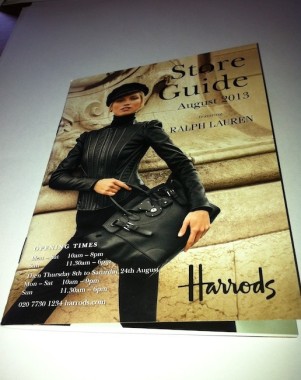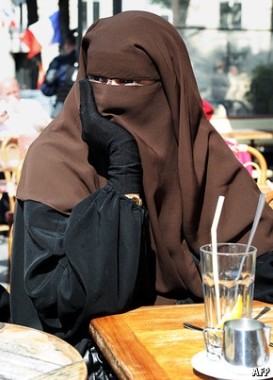 Summer Black, of course. No New Yorker needs persuading about wearing black in the summer―is there any other color?―but apparently London women need help, or at least encouragement to believe that black is still the new black. Hence the reassurance by style mavens that it’s more than OK to dress all in black this summer, despite the heat wave (a blip compared to New York weather), and despite all the advice to go floral and, well, summery. To wear black is to aim for “cool girl Scandinavian.” I have no idea what the “cool girl Scandavian” look is (the sartorial version of Scandanavian noir?), but there is plenty of black in London.
Summer Black, of course. No New Yorker needs persuading about wearing black in the summer―is there any other color?―but apparently London women need help, or at least encouragement to believe that black is still the new black. Hence the reassurance by style mavens that it’s more than OK to dress all in black this summer, despite the heat wave (a blip compared to New York weather), and despite all the advice to go floral and, well, summery. To wear black is to aim for “cool girl Scandinavian.” I have no idea what the “cool girl Scandavian” look is (the sartorial version of Scandanavian noir?), but there is plenty of black in London.
A recent trip with a visiting American teenager to Harrods had lots of black on display. (The fabled store is now owned by the father of Dodi, the boyfriend of Princess Diana, who died with her sixteen years ago; there’s a memorial shrine to the couple on the lowest floor of the store)
But the black that caught more than my eye was the number of women dressed entirely in black, shopping.
 It was hard for me not to stare as I tried to try to make sense of the contrast between these women covered head to toe in black, with only a slit for their eyes, and the display of gorgeous luxury items for which the store is famous. What, I wondered, were they shopping for? And what were they wearing under the burkas (or burqas as it’s often spelled here)? In London burkas and headscarves are omnipresent and, for the time being at least, the fact of women covering their faces is not moving forward as a political issue. It has, however, been raised by conservatives.
It was hard for me not to stare as I tried to try to make sense of the contrast between these women covered head to toe in black, with only a slit for their eyes, and the display of gorgeous luxury items for which the store is famous. What, I wondered, were they shopping for? And what were they wearing under the burkas (or burqas as it’s often spelled here)? In London burkas and headscarves are omnipresent and, for the time being at least, the fact of women covering their faces is not moving forward as a political issue. It has, however, been raised by conservatives.
The same is not true in France, where the question of the scarf (le voile) and face covering is a hotly debated and fiercely argued question.
 In France the rationale for banning the wearing of the headscarf is part of the secularist legislation banning all “ostentatious” religious symbols from the cross to the yarmulke–and the anti-headscarf position is largely supported by many well-known French feminists. But given all the other political and economic issues associated with the large Muslim population in France, the question of the headscarf is rarely just a matter of opinion. It has become a lightning rod for protest, often accompanied by violence on both sides―protesters and police.
In France the rationale for banning the wearing of the headscarf is part of the secularist legislation banning all “ostentatious” religious symbols from the cross to the yarmulke–and the anti-headscarf position is largely supported by many well-known French feminists. But given all the other political and economic issues associated with the large Muslim population in France, the question of the headscarf is rarely just a matter of opinion. It has become a lightning rod for protest, often accompanied by violence on both sides―protesters and police.
In the summer of 2003 I was in London for the astounding heat wave that caused many deaths here and in Europe. I found myself more than puzzled, horrified really, to see many Muslim families in Kensington Gardens where the men were sitting on the grass in open-necked shirtsleeves, and the women tented in black tending to the children running around freely.
Surely, the acceptance of cultural difference has its limits? Or am I just depressingly Western?
